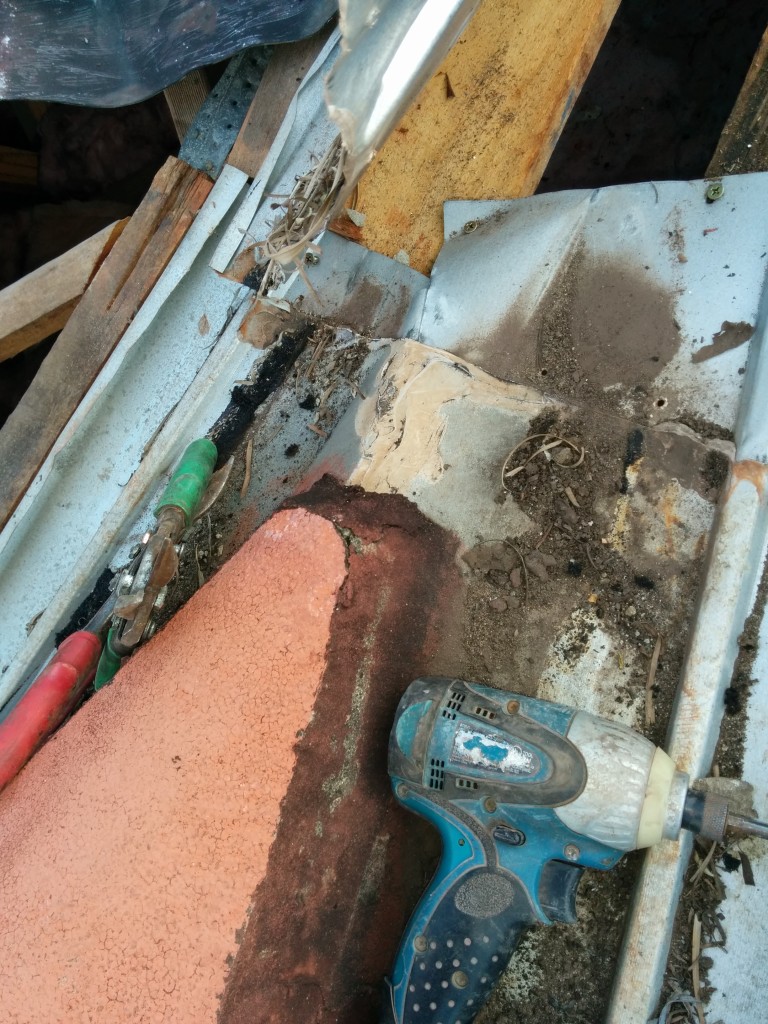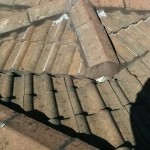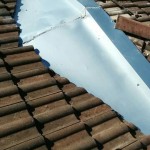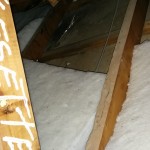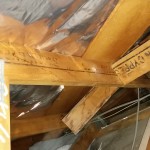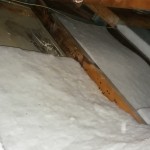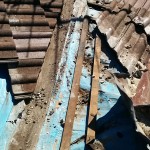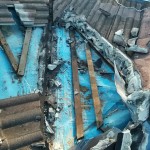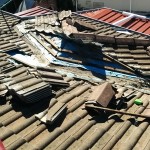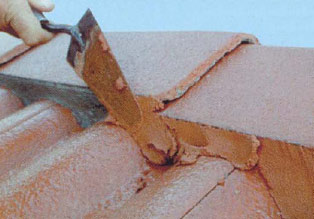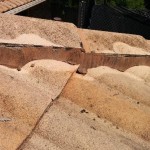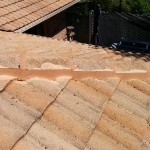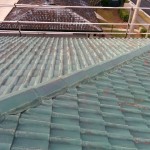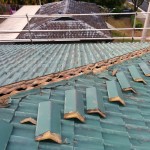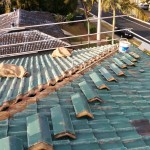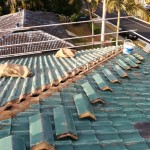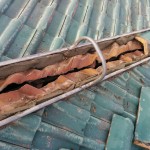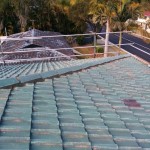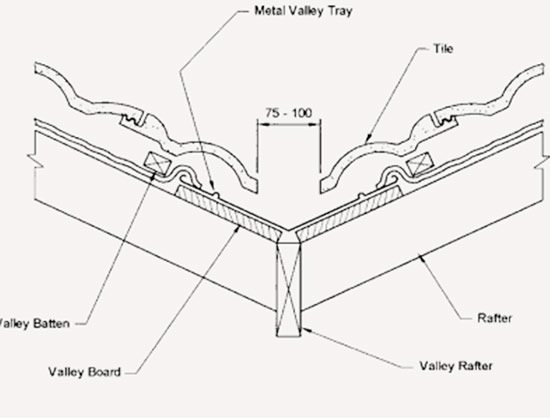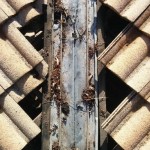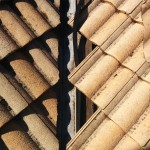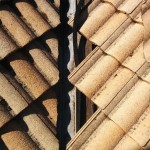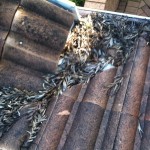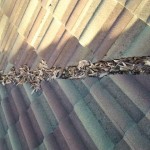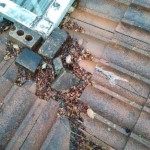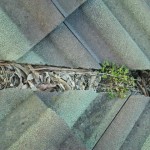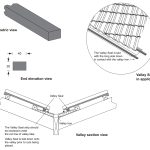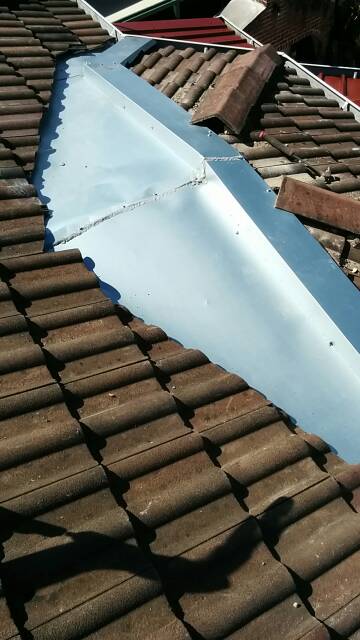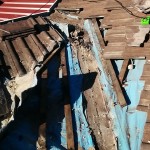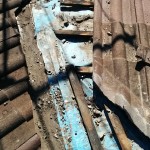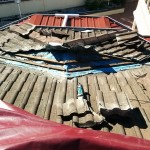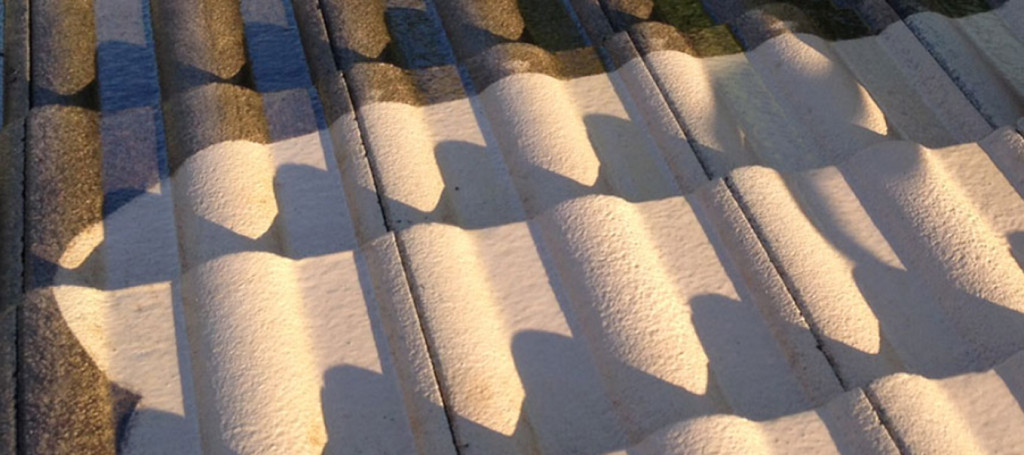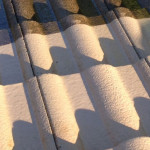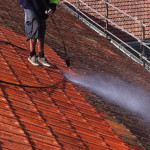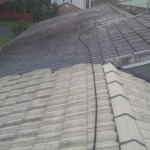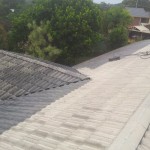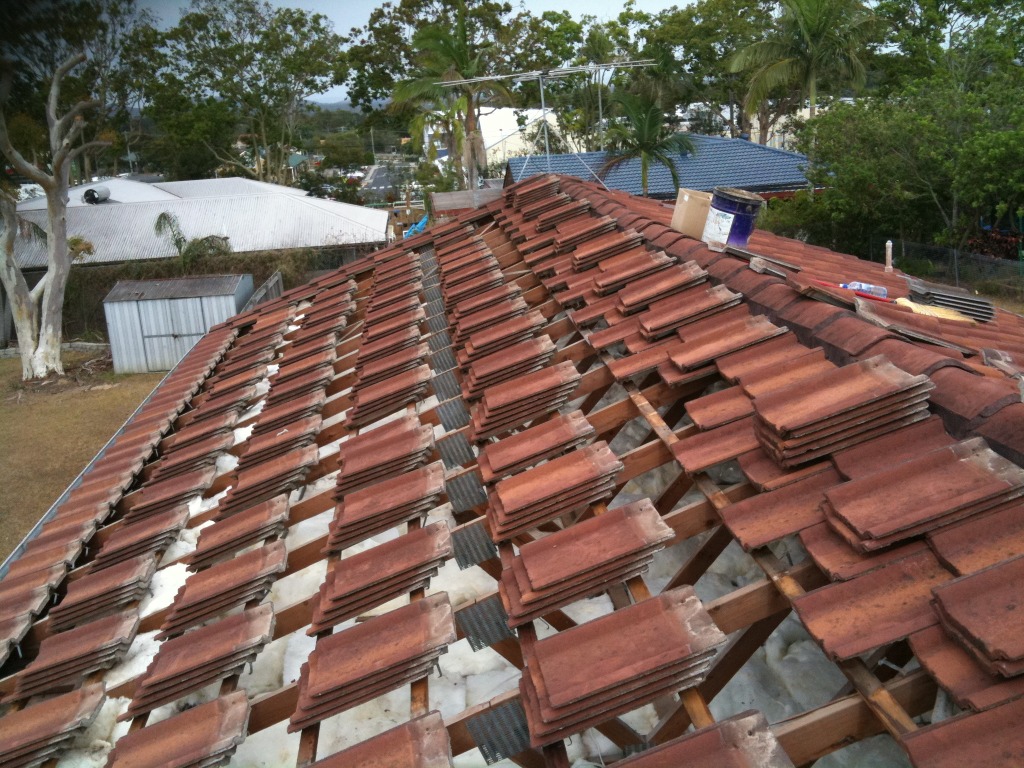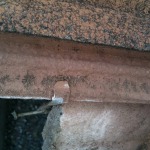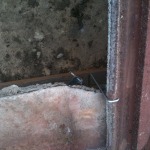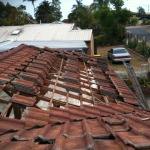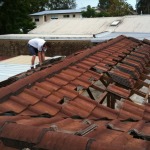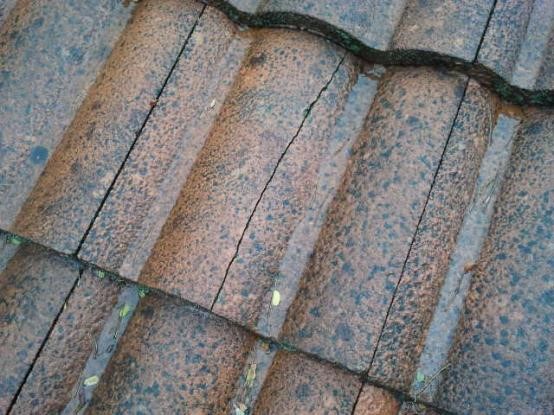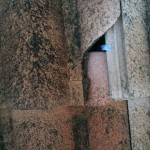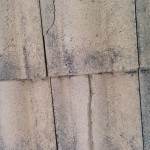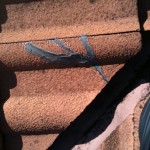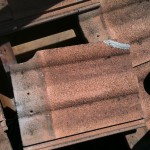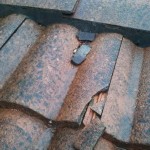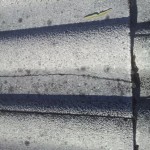Bedding and Pointing
Bedding
Ridge capping is held down and supported by bedding sand and cement based mortar (similar to the joins between the brickwork on a house. Unfortunately, the bedding will crack as it naturally shrinks and moves with the natural movement of the roof. In the past this is how the roof would have been finished.
With age and movement on the roof, the bedding (and attached pointing) would start to crack – and the ridge capping will then start to dislodge, crack and sometimes separate from the capping.
1. The process of re bedding and pointing ridge capping starts with pulling up the ridge capping that is to be re bedded. These tiles will have the old cement mortar and pointing removed. Any cracked ridge caps or broken tiles near the caps are also replaced.
2. New bedding cement is mixed (a 3 to 1 ratio) and placed within a bedding frame to keep the caps straight and level. The cleaned ridge caps are then placed in position (bedded) with multiple ridge caps being placed in an overlapping fashion until the row is completed.
3. Any loose cement is removed
4. Once the bedding cement mortar has dried, a flexible, waterproof compound is applied to protect it from the natural elements and movement of the building structure.
Flexible pointing
Some key benefits and features of Flexible Pointing over cement pointing?
Flexible pointing is like it says, it is flexible. It moves with the natural movement of your home and avoids cracking. As the foundations shift, the flexi pointing expands and contracts as required.
Flexible pointing has a skin. The makeup of chemicals in the product specifically prolongs the life of the flexible pointing not allowing the suns UV to break down the material. Also the colour stays in the pointing / skin of the pointing for the duration of the applied material, only fading ever so slightly.
Because the flexible pointing is pre-mixed and the colour is always the same, matching the product is easy.
The advantages of Flexible Pointing is that it has excellent hold down properties and is flexible therefore giving great longevity. As a result most manufacturers give a 10 year warranty.
Flexible Pointing uses an all acrylic binder specifically recommended for new roof and roof refurbishment applications.
Because flexible pointing is already premixed, it is a lot easier for handy people to repair their roofs. Often we get questions like “how do you use Flexible pointing?” it is reasonably straightforward to use, however you have to be realistic about the finish that you are going to get. Like any trade, especially skilled trades, practice make perfect, there are other factors to take into account such as safety, clean up around the caps, weep holes etc.
Flexible Pointing comes in 10 litre pails and a large range of colours. Flexible Pointing washes up with water!
Where would I use Flexible Pointing?
Flexible Pointing is specially designed for pointing concrete or terracotta ridge caps once they have been bedded down, in some circumstances you can go over the original bedding material as long as it is clean
Most flexible pointing manufacturer’s product has especially in high wind areas such as Australia’s eastern seaboard and conforms to CSIRO AS2050 appendix F to a C3 rating.
Contact Caleb



